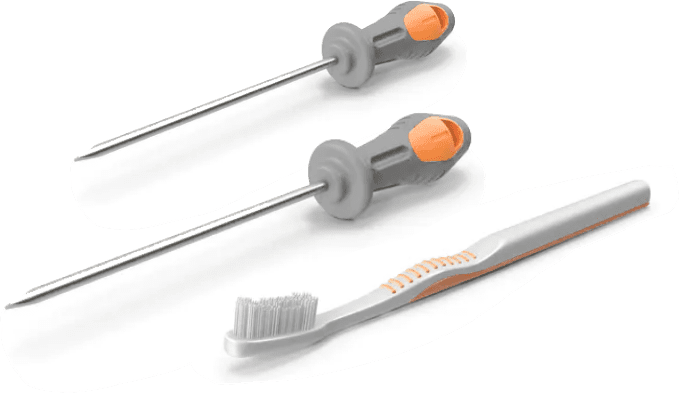Designing for Overmolding and Understanding Overmolding Materials
Overmolding has revolutionized the field of manufacturing by allowing the creation of complex, multi-material parts that enhance both functionality and aesthetics. This process involves molding one material (the substrate) over another (the overmold), resulting in a single integrated component. The design considerations for overmolding are crucial to ensuring the success of the final product.
When designing for overmolding, compatibility between the substrate and the overmold material is paramount. The substrate material should be able to withstand the heat and pressure of the overmolding process without warping or deforming. Common substrate materials include rigid plastics, metals, and even electronics. The overmold material, typically a softer elastomer or rubber, provides grip, comfort, and additional functionality.
Selecting the appropriate overmold material is a critical decision. Factors such as chemical compatibility, mechanical properties, and desired aesthetics influence this choice. Thermoplastic elastomers (TPE), silicone, and polyurethane are popular choices due to their flexibility, durability, and ease of processing. TPE, for instance, strikes a balance between softness and rigidity, making it ideal for ergonomic grips and seals.
Overmolding Operations: Process and Benefits
Overmolding involves precise coordination of several operations. First, the substrate is molded. Then, the partially cured substrate is placed into another mold, where the overmold material is injected. The heat and pressure allow the two materials to bond effectively. The benefits of overmolding are manifold. It eliminates the need for assembly of separate parts, reducing production time and costs. Moreover, overmolding enhances product durability by encapsulating sensitive components and providing protection against environmental factors.
Overmolding vs. Insert Molding: Making the Distinction
Overmolding is often confused with insert molding, but they are distinct processes. In overmolding, the second material fully encapsulates the substrate, creating a seamless transition between materials. In contrast, insert molding involves placing pre-fabricated components (inserts) into the mold cavity before injection. The molten material surrounds these inserts, creating a strong mechanical bond.
The choice between overmolding and insert molding depends on the application’s requirements. Overmolding excels when a soft grip or tactile surface is needed, or when a seamless appearance is desired. Insert molding, on the other hand, is suitable for incorporating metal elements such as threaded inserts, strengthening the product’s structural integrity.
In conclusion, overmolding opens up a realm of possibilities in product design and manufacturing. Careful material selection, meticulous design considerations, and understanding the nuances of overmolding versus insert molding all contribute to the success of the final product. As technology and materials continue to advance, overmolding will likely play an increasingly significant role in creating innovative and functional products.



